Millions of Americans have enjoyed weeks of spring-like warmth only to find themselves bracing for sub-freezing temperatures, with some areas experiencing a 20-degree swing.
After St. Patrick’s Day weekend, much of the country will be plunged into chilly weather, with more than half of the US population facing cold or even freezing conditions.
The cold air is expected to creep into the Midwest on Sunday, with temperatures dropping to 23 degrees in Minneapolis and 31 degrees in Chicago.
This wintry weather will extend into Tennessee and Alabama in the south before eventually reaching the Northeast. New York City, for example, is set to see a morning low of 35 degrees on Tuesday morning.
According to Fox weatherabout 182 million Americans are expected to experience below-average temperatures on Monday.
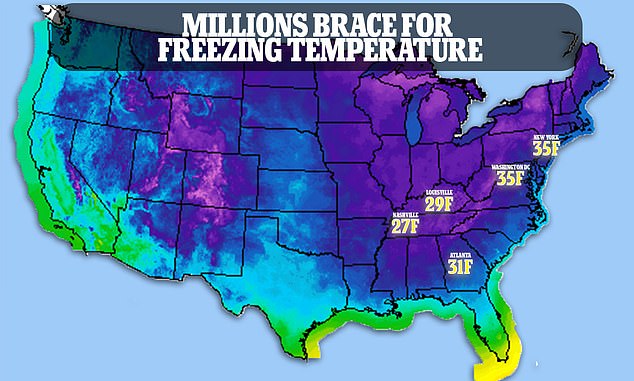
Millions of Americans have enjoyed weeks of spring-like warmth only to find themselves bracing for sub-freezing temperatures, with some areas experiencing a swing of 20 degrees
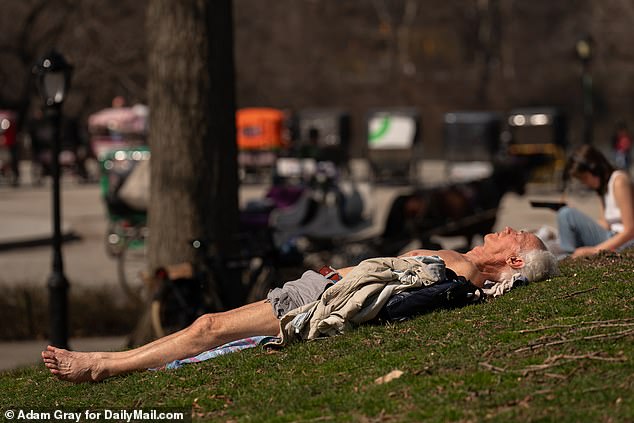

New York City is set to see a morning low of 35 degrees Tuesday morning after a week of spring-like warmth. Pictured: People enjoy the warm weather in Central Park on Thursday
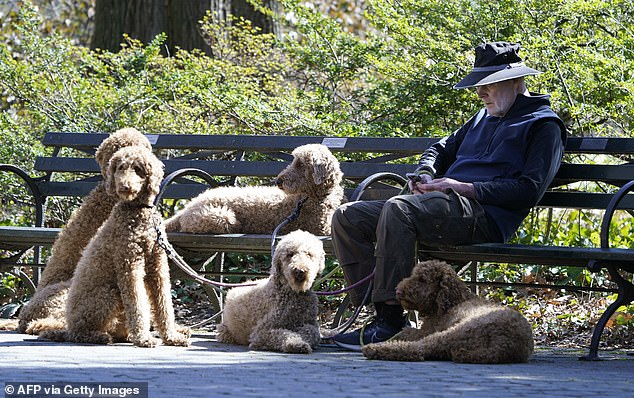

Some cities are set to experience a swing of more than 20 degrees after weeks of spring-like warmth. Pictured: People enjoy the warm weather in Central Park on Thursday
From Saturday to Monday expect St. Louis, Missouri, a swing of more than 20 degrees, with temperatures dropping from the high 60s to the low 40s.
Similarly, Atlanta’s high temperature is expected to drop from the low 70s to the mid-50s, according to CNN.
Minnesotans may wake up to typical winter weather, with morning temperatures as low as 23 degrees on Sunday and dropping to below 20 degrees on Monday.
Temperatures will be low enough to bring frost and freezing conditions well into the South, as both Louisville and Nashville could drop into the low 30s Monday morning, typical winter weather for the area.
Further east, the cold air is expected to reach large parts of the eastern half of the country on Monday.
For example, New York City is expected to see days with high temperatures in the mid to upper 40s compared to the historical average of 50 degrees.
Waves of colder air could trigger showers and snow showers in parts of the Midwest and Northeast, AccuWeather That’s what meteorologist Ryan Adamson says.
“The situation is a bit more complex than last weekend as there will be some disturbances running alongside the dip in the jet stream and these will cause the extent of showers and snow showers to fluctuate,” he added.
The arrival of cold early spring weather comes after many parts of the country experienced the warmest winter on record.
Record heat swept the nation in February, traditionally one of the coldest months of the year.
Nebraska and Illinois saw temperatures in the 60s and 70s despite their average February temperatures in the 30s and 40s.
According to the National Weather Service, Nebraska had its second warmest February on record in its 154-year history of weather tracking.
FOX Forecast Center meteorologist Cody Braud blamed EL Nino for the warm winter, saying the weather pattern ‘played a big role in the record heat.’
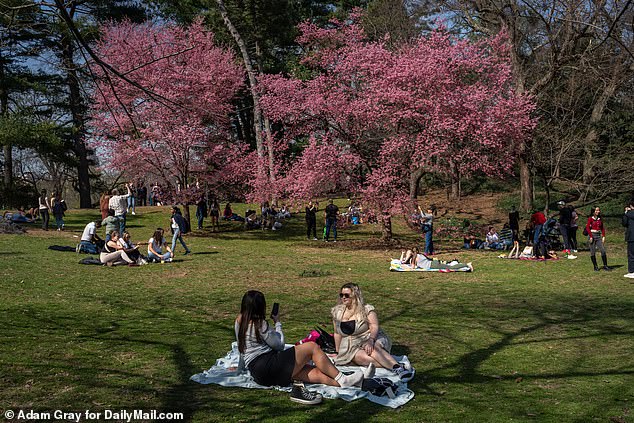

The arrival of cold early spring weather comes after many parts of the country experienced the warmest winter on record. Pictured: People enjoy the warm weather in Central Park on Thursday
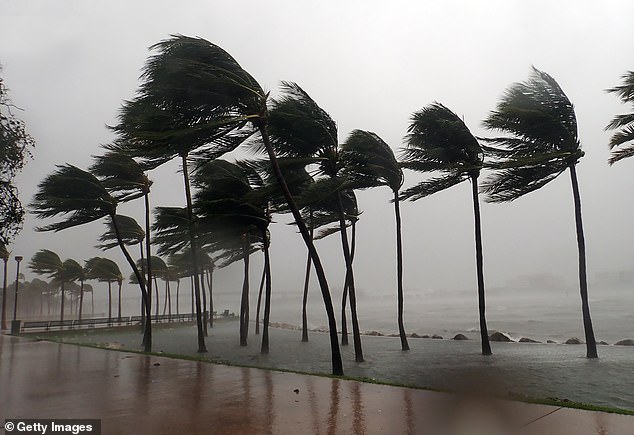

FOX Forecast Center meteorologist Cody Braud blamed EL Nino for the warm winter, saying the weather pattern ‘played a big role in the record heat’ Image: Hurricane Irma seen in Miami with EL Nino blamed for gray skies
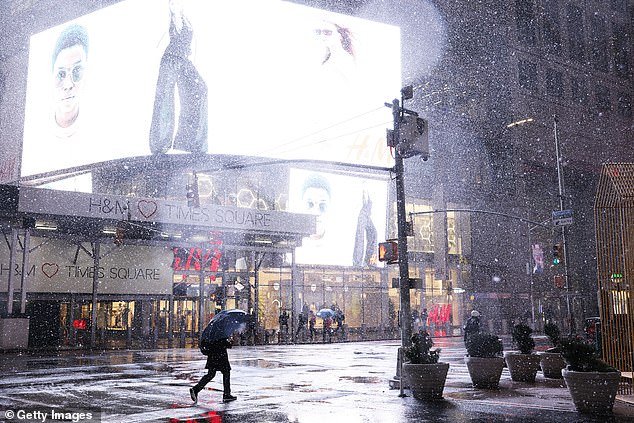

El Niño – which translates to ‘little boy’ in Spanish – is caused by a shift in the distribution of warm water in the Pacific Ocean around the equator. Pictured: People walk along Times Square in the middle of a winter storm in February
“The pattern of El Niño typically means a strong Pacific jet, which shifts the polar jet farther north,” he said.
“Obviously there are other facets to the story, but this pretty much keeps the coldest air trapped out of the Lower 48s.”
‘This allowed an abundance of warm air to dominate the eastern two-thirds of the country. Not only that, but it allowed storms to be mainly rain.’
El Niño – which translates to ‘little boy’ in Spanish – is caused by a shift in the distribution of warm water in the Pacific Ocean around the equator.
Although the pattern’s influence has weakened, NOAA warns it could persist through the summer, bringing above-average temperatures through August.
By the end of next week, temperatures will rise rapidly, with the remaining spring months skewing warmer than normal, according to the Weather Channel.
“April and May may be only moderately anomalously warm, which would be remarkable in our new world of accelerated global warming,” according to Todd Crawford, vice president of meteorology at Atmospheric G2.
